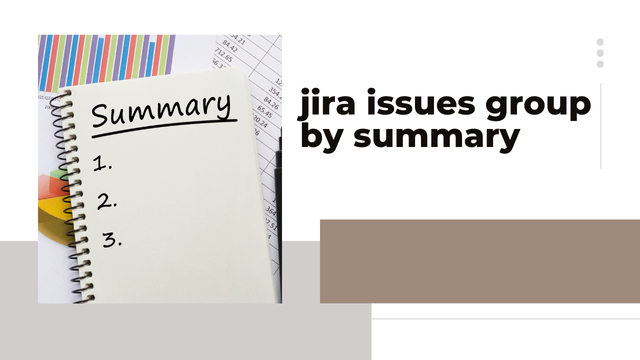Grouping Jira Issues by Summary: A Practical Guide
Jira is a great tool which allows to organize projects, define tasks and collaborate within cross-functional teams. With its flexibility, users can arrange the operations in a workflow in order to accomodate big amount of information. There is nevertheless a common difficulty that concerns the treatment of problems related with similar themes or content. When you try to analyze and sort Jira issues, one of the simplest and quickest ways is to categorize them by summary.
This article also explains the advantages, application, and approaches of categorising Jira issues by their summary.
Why should group Jira Issues by Summary?
1. Recognizing a Pattern and a Trend One identifying accident patterns or recurring problems can be seen and dealt with, issues grouped by summary allow addressing the causes.
2. Streamlining Workflows This means that having related issues will help in avoiding repetition in the project as many people in the team are likely to deal with similar issues. It also aids in integrating solutions as well.
3. Enhancing Reporting This means that issues that come under the various categories in grouped issue can give and overview of particular area or project and it makes it easier to generate the reports that may be of value to the stakeholder.
4. Improved Prioritization Grouping related issues enable teams to separate work by its importance and work on more critical or pressing issues first.
Common Use Cases
Bug Triaging QA teams often group the bug reports by the summary, so more often reported bugs can be prioritized for the fixes.
1. Feature Requests Product managers could organize the customer feedback or feature request based on summary to look for patterns in the customer demand and the direction of the product development.
2. Incident Management Common summaries allow DevOps teams to classify a given incident and not have to respond individually each time an outage or poor performance occurs.
3. Team Collaboration When many teams are involved in working on a single project, as highlighted above, it helps to group similar kind of issues so as to avoid complications such as group members working on similar problems or doing similar work.
JIRA – how can I sort it by the summary
1. Use JQL (Jira Query Language) JQL is a really robust language of searching and filtering of issues in your project. To group by summary, you can run queries like:
summary ~ “keyword”
This filters issues that have a keywords matching the one in the keyword parameter of its summary. They can subsequently be sorted and tagged individually or lest be exported for further categorization.
2. Add Custom Fields There must be a new custom field where the issues shall be labelled according to the category of their summary. The automated way is to set specific tags based on keywords detected in the summary.
3. Leverage Automation Rules Through Jira Automation, issues can be grouped in a much more automated manner.
For example: Setting up an automation rule with given keywords where it sums up documents assigned to a particular group or category. This will automatically relate some issues with the others.
4. Export and Analyze If these native tools for Jira integration can’t suffice, export these issues into other applications like Excel, Google Sheets, or Power BI. Functions or scripts are useful when one needs to group similar summaries with each other and get an overall view in terms of insights on actions to be taken.
5. Third-Party Apps There are several apps by Jira Marketplace dedicated to improved issue grouping and analysis. Grouping by summaries can be easy from ScriptRunner or other custom dashboards from plugins.
Best Practices
Standardize Summaries Explain at the team meetings that it is essential for every of them to describe in brief, using clear and concise language. This makes grouping even better and does away with confusion as much as possible.
Automate Wherever Possible
Avoid adding/posting a lot of issues manually to the relevant tag(s), and try to automate these steps in Jira.
Review and Refine Regularly
It can be recommendable from time to time to review which issues you grouped together in order to see if they are still relevant and accurate. Reorganize groupings according to an array of projects tasks and challenges. Reporting tools have to be integrated since they may arise as separate requirements. Integrate grouped issues with reporting tools for the purpose of presenting a set of meaningful numbers to the stakeholders.
Conclusion
Organizing Jira issues using the summary is one basic yet efficient approach in handling tasks, analyzing the working progress, and improving efficiency work. When equipped with highly usable tools such as Jira, most teams can go a long way in solving regular issues with their work processes. Through time investment on grouping and its optimization organizations will be in a position to harness full potential of Jira for project success.
ALSO READ THIS: Using Jira to Empower Legal Departments:

